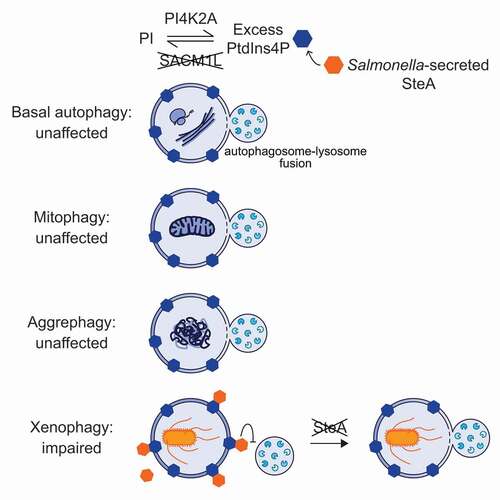Figures & data
Figure 1. Function of SACM1L PtdIns4P phosphatase in autophagy. Loss of SACM1L leads to the accumulation of PtdIns4P on cellular membranes, including autophagosomes, and a defect in xenophagy-dependent restriction of intracellular bacterial replication. Fusion of lysosomes with nonselective autophagosomes, as well as those induced through selective mitophagy and aggrephagy, are unaffected by loss of SACM1L expression. Salmonella-secreted effector and PtdIns4Pbinding protein SteA contributes to the xenophagy defect by blocking lysosomal fusion, and thus, shifting the balance in favor of bacterial replication. Loss of both SACM1L and Salmonella SteA restores the host defense mechanism.

